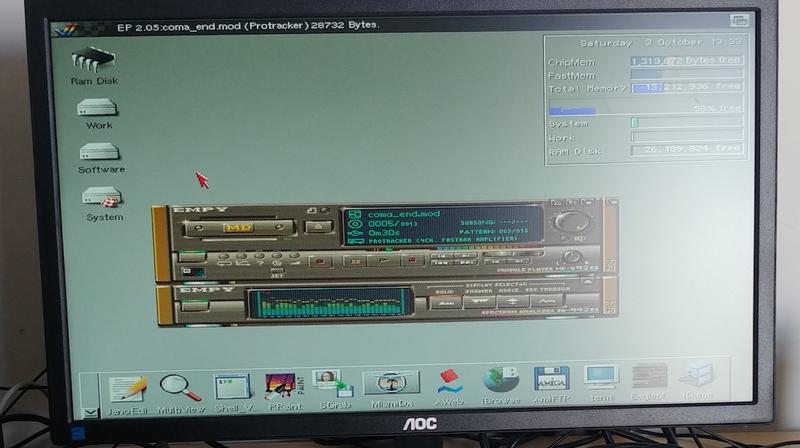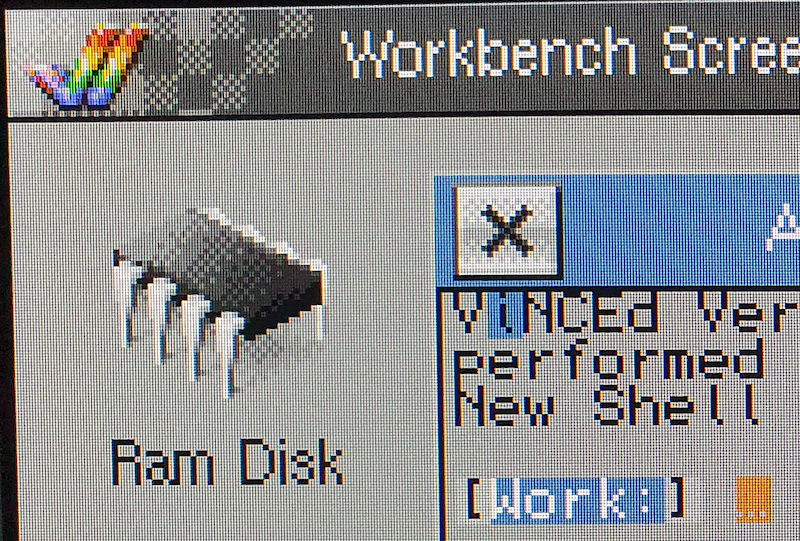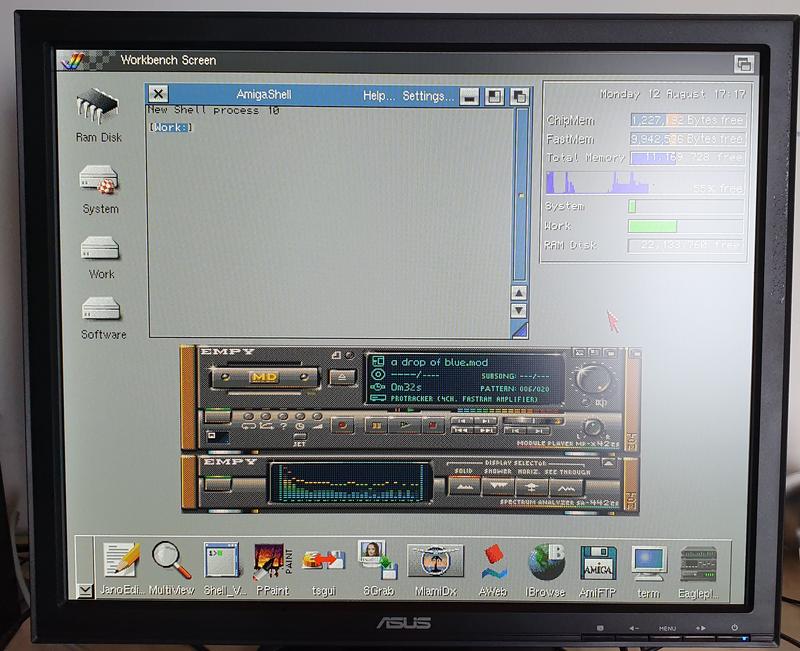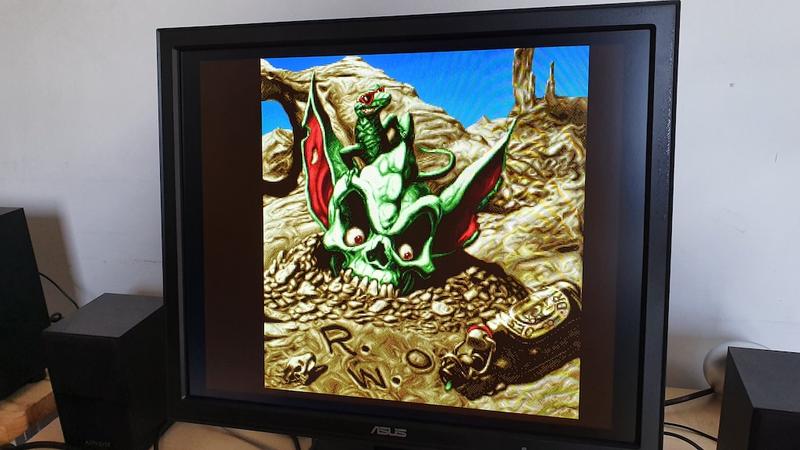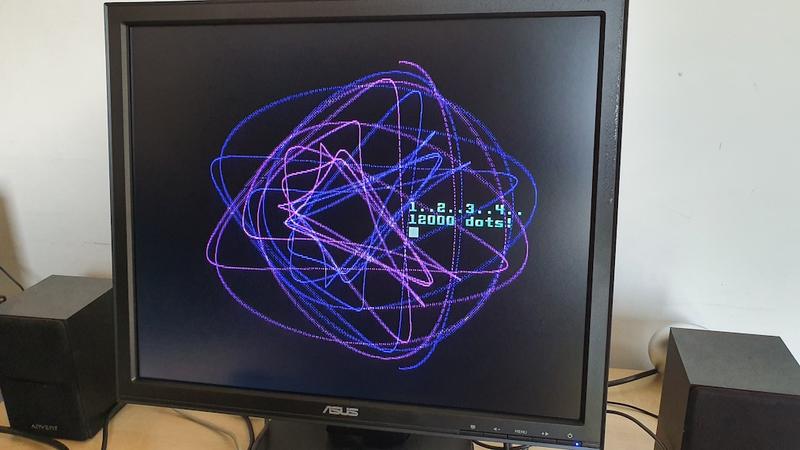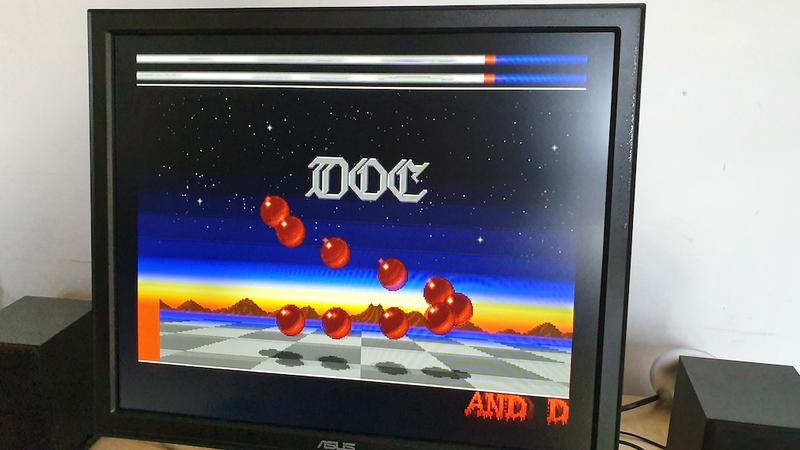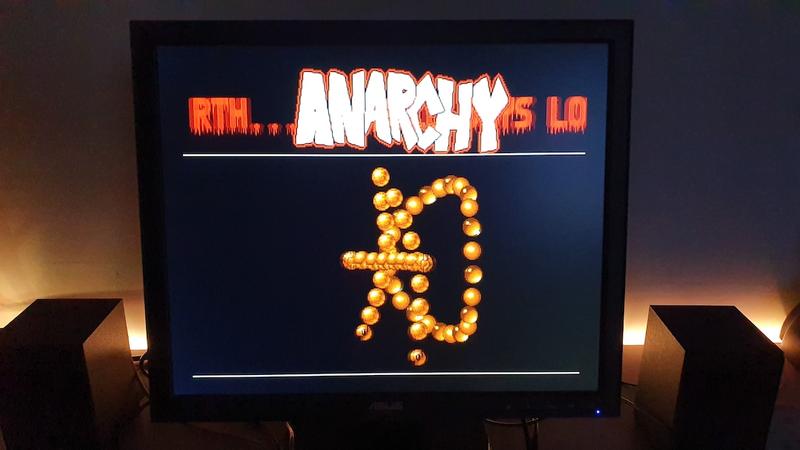Monitor upgrade for the A1200
Updated:
When the Amiga was introduced in the mid 80s, pretty much all displays available to consumers were 4:3 ratio TVs, and you plugged your computer into your TV via a RF modulator box. Later, dedicated monitors like the Phillips 8833 Mk2 (which I originally had as a teenager in the 90s) became available and these offered a much improved, sharper image but were still in the 4:3 ratio as this is what the native Amiga, PC and gaming console screenmodes had been designed around.
Nowadays however (with the odd exception) all commonly-available displays from TVs to flat-screen monitors are all in wide-screen 16:9, 16:10 or wider ratios. These displays tend to make everything designed for a 4:3 ratio look stretched and a little blurry. This is because the native screenmodes of the Amiga - such as 320 x 256 for most games and demos - cannot be expressed as even, equal fractions of modern widescreen resolutions. So you either end up “cropping” the display leaving black borders down the side, or you attempt to scale it up but end up with rounding errors and “pixels” that are wider than they are tall.
For reference, here’s a cropped photo I took when I first got my A1200 working again:
In this picture, I am using a standard modern widescreen monitor with “FHD” resolution of 1920x1080 pixels. It’s connected to the Amiga using an Indivision AGA board, and while I sort of adjusted to how it looked, it never felt right to me because of the squashed and stretched feel.
I can’t say exactly what triggered all this off, but I realised a little while ago how unnatural this looked and how much better screenshots always looked when presented in the correct ratio. I then remembered years ago that before everything went wide-screen, “square” 4:3 ratio monitors were pretty much all you could buy, especially the early wave of flat-screen displays. So I went searching through eBay and various other second-hand sites but I finally found a site selling brand new, unused 4:3 ratio monitors - it seems like there’s still a demand for the old ratios which is great news for us Amiga and other retro-computing enthusiasts.
I picked out the cheapest option which was an ASUS VB199T-P, a 19-inch SXGA LED IPS monitor with a native resolution of 1280x1024 pixels. This works out to be the perfect resolution for me as all the Amiga screenmodes I tend to run can be expressed as even fractions of this.
For example, my Workbench is 640x512 pixels in 256 colours which for my setup (50Mhz 030 with 16Mb RAM) is a good balance between speed and display quality. This means that every pixel in this screenmode can be displayed by the monitor as a 2x2 pixel square (640 x 2 = 1280, 512 x 2 = 1024). This can be seen most clearly when you look at an extreme closeup of the new display:
It’s perfect! No stretched, blurred or odd-shaped pixels, just lovely crisp and clear squares. This is what my Workbench environment looks like now:
Compare this with the photo at the start of the post; the effect is most pronounced in the text underneath icons, and in the EaglePlayer (music player that looks like a HiFi) window. Total “night-and-day” difference and I was blown away by how much better everything looked, not to mention how it felt so much more like my Amiga of old.
This monitor also works out wonderfully for most games and demos as these are usually (in PAL mode) in a 4:3 ratio of 320 x 256 resolution which works out as “pixels” of 4 x 4 on the Monitor. Demos in particular looked fantastic and it was great to see them as intended once more:
I got carried away and ended up working my way through all the classics, before eventually re-watching some true vintage gems from the late 80s and early 90s:
At which point it was getting dark outside and I realised I should probably call it a day and go to bed! In short, this is easily some of the best money I have ever spent on the classic Amiga and has totally changed the feel of the system for the better. All those classic games and demos now feel brand new to me once again; If you’re currently using a widescreen monitor on a classic ‘miggy, I cannot recommend enough trying out a 4:3 ratio screen. If you don’t want to go for a new one, you can probably pick up one for nearly nothing at your local second-hand store or website as they’re mostly seen as obsolete these days. Far better they end up in the hands of retro-computing fans than landfill!
Until next time… I have to go and have a couple of rounds with Project X now :)

